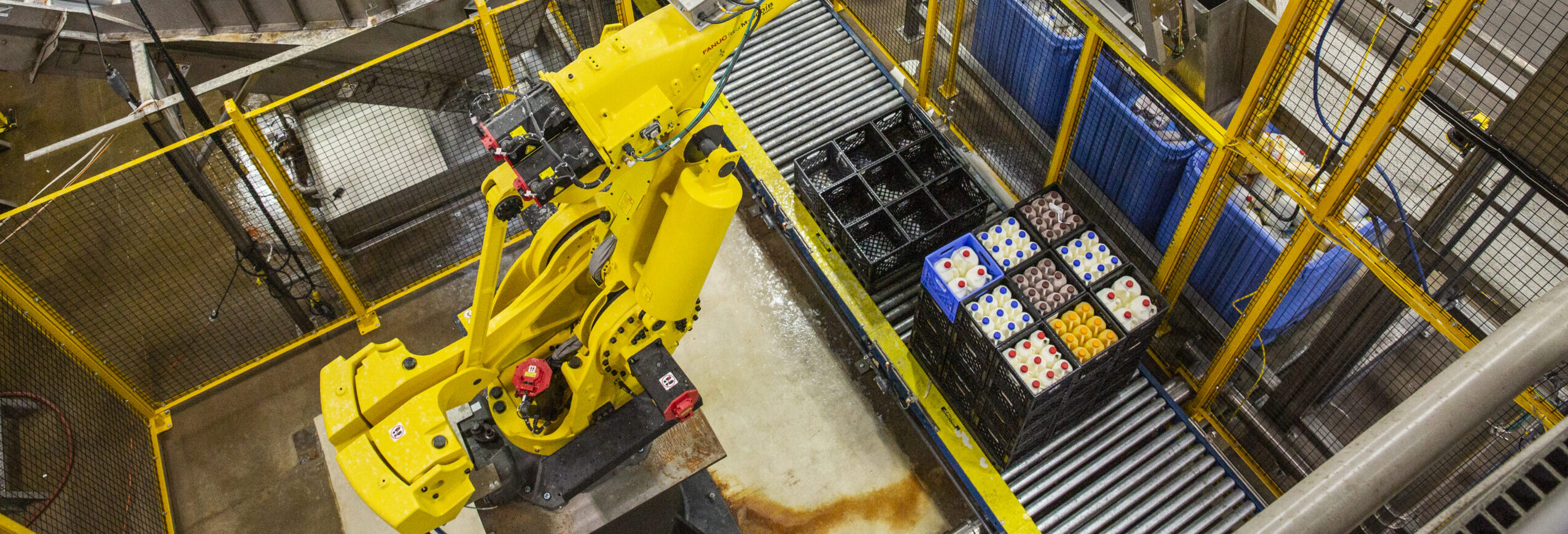Nutrition 101 Invests in Automation to Transform its Packing Process and Enhance Efficiency.
Nutrition 101
Case Study
Key Stats
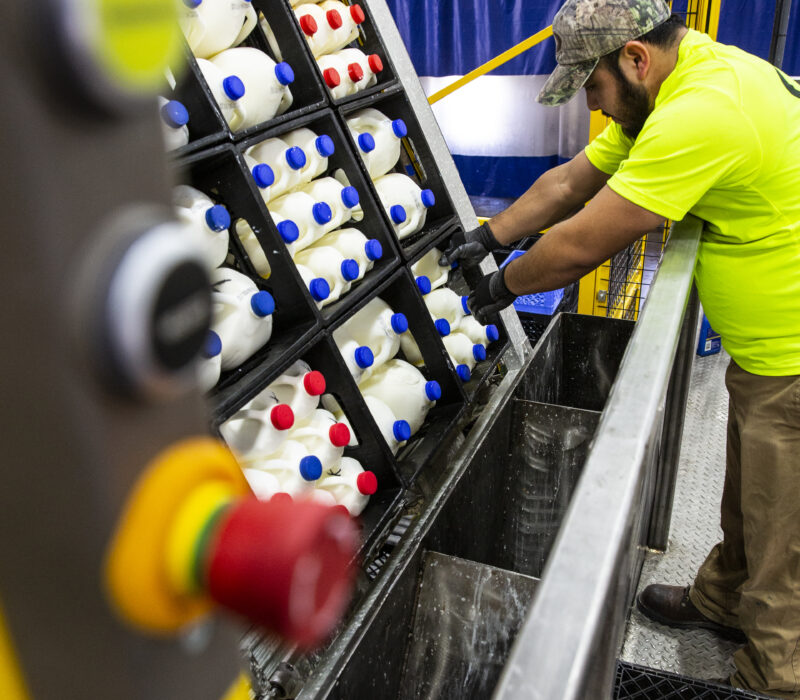
Company History
Family-owned company becomes global solution provider for food recycling.
Founder Ross Peter parlayed his master’s degree in swine nutrition and a small farm in western Illinois into a food by-product company providing an economical solution for regional, national and global food manufacturers seeking to divert waste from landfills. The company Ross developed—Nutrition 101 Inc.—began in 1984 as a pioneering concept to convert food by-products into livestock feed. Today it has grown into a sustainable solution that converts thousands of tons of by-products into livestock feed, biofuels and recyclable commodities. It serves regional, national and global food manufacturers to minimize environment impact while saving money.
Ross continues an active role serving as Chairman of the company now based in Pendleton, Indiana. Second generation Cory Peter is now president. General Manager Joe Haley joined Nutrition 101 more recently in 2019.
Cory explained the company’s business as working with different by-product streams that come out of food plants. “We have projects throughout the United States,” he said. “These are all post-manufacturing, pre-consumer.” The waste is often the result of manufacturing inefficiencies, he explained. Inefficiencies in raw materials, production, storage, and distribution also create food waste that can be similarly recycled. All of that waste can be processed for reuse as animal feed, and Nutrition 101 does that for the producer.
“We are an end-to-end solution provider for the food processing life cycle,” Cory said. We operate within the Food Safety Modernization Act. “Those regulations also apply to animal feed, so it’s obviously part of our process.”
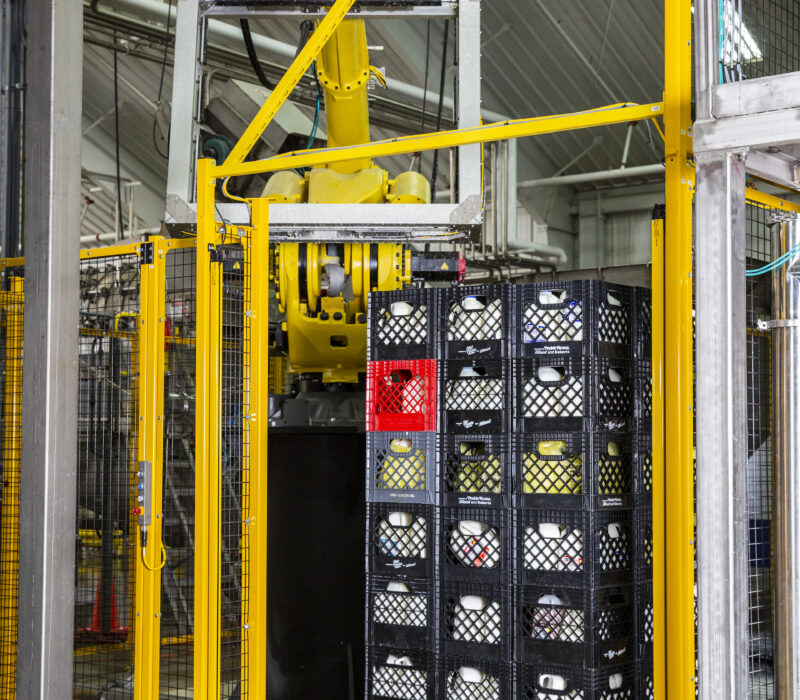
The Project
Nutrition 101’s tech adoption project focused on automating its packaging and unpacking process.
Part of Nutrition 101’s business involves sorting and depackaging a variety of food products. This involves a lot of manual labor. To demonstrate the magnitude of the manual process, Joe referred to “the case challenge.”
At one point, the company needed to depackage cases—as many as 1,000 each day. “Imagine,” he said, “each case weighs 32 pounds. And employees needed to lift up to 32 pounds hundreds of times a day. And we have to go through the food safety process of inspecting it all.” “So literally every case that comes into the door has to be lifted by a human, and that is where the automation is really going to help,” Cory continued.
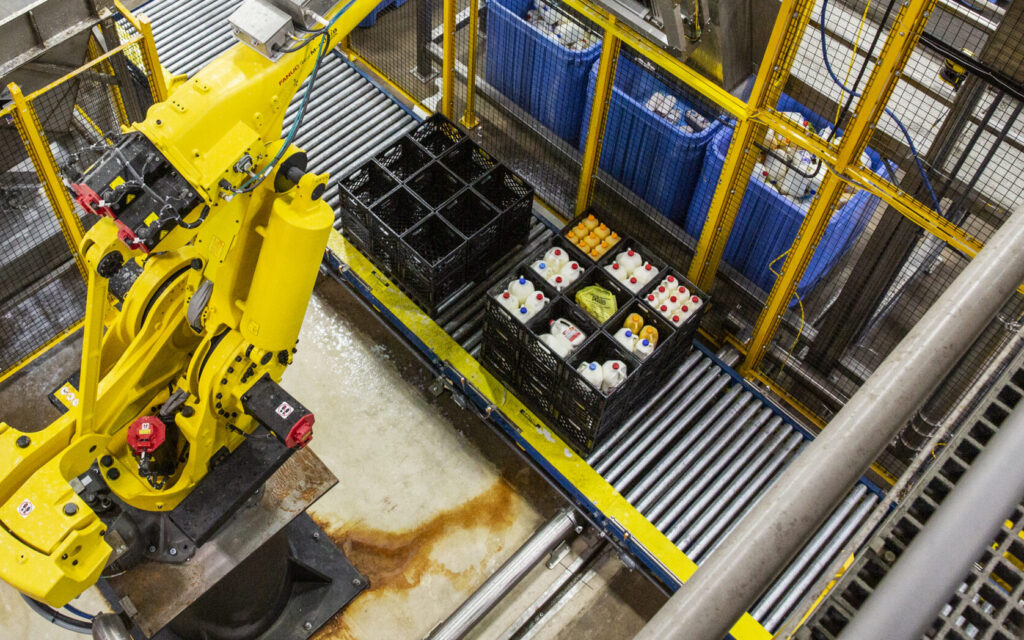
The robot will do the work in place of the human labor, lifting nine cases at a time, each case is about 32 pounds each, or 288 pounds total. Add the 200-plus-pound tool that grabs and holds the cases, and the entire payload can be 600 to 700 pounds at a time. Because of the payload size, the project calls for a robot, rather than a cobot or collaborative robot.
With the manual processing eliminated, the operator is able to inspect products without the manual labor. After the sorting process, cases are restacked onto pallets move to the next stage.
“Pre-programmed buttons advance pallets to the next step, but the system itself advances the pallets, restacks everything and picks up everything automatically,” Cory said. “But the human is always interfacing with the robot.
Manufacturing Readiness Grants (MRG) provided by the Indiana Economic Development Corporation and administered by Conexus Indiana are available to Indiana manufacturers willing to make capital investments to integrate smart technologies and processes that improve capacity. Nutrition 101 Inc. was awarded grant funding to invest in robots and smart manufacturing technology that would automate the material handling process reduce heavy lifting and repetitive inspections for employees.
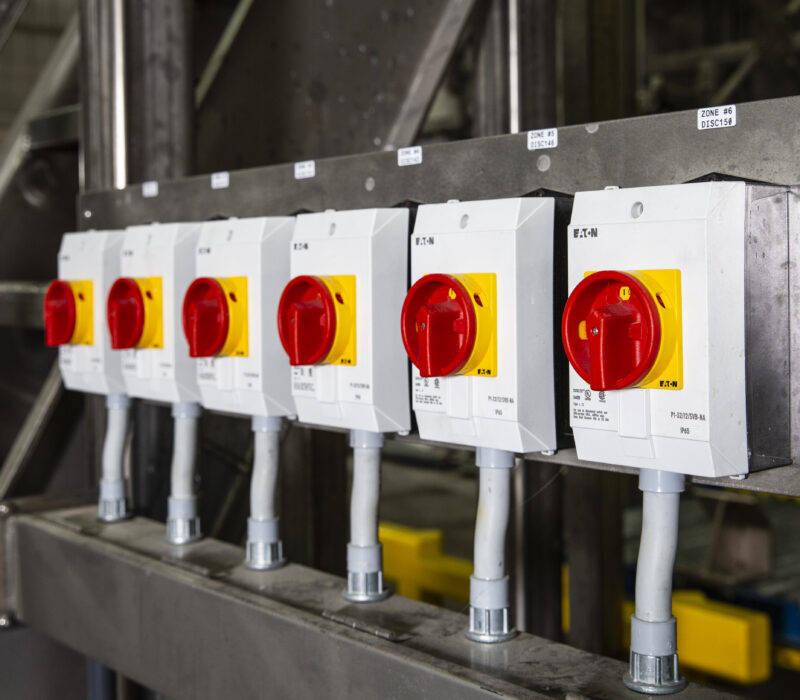
Key Learnings
Automation will enhance your efficiency and responsiveness to customers.
Products move quickly at Nutrition 101 by necessity. Cory described the process: “Loads come in and are processed immediately. A load is typically processed and finished in a few hours. Things don’t come into our facility and sit for two or three weeks. It’s in and out and keep moving. So, when you have a critical piece of equipment, you have to be able to support it.”
Leadership knew what they wanted automation to accomplish, and what needed to remain in the workforce’s hands. To make that happen, they understood they would need a robot, and control software, and they also were thinking about maintaining the equipment once it was operational. In that sense, smart technology was exactly like any other critical equipment, Cory said.
Understand your core competencies, and find the balance between what can be outsourced or kept in-house.
Nutrition 101 discovered a solution provider just 20 minutes away that was able to provide robot and assembly support. “They assembled the whole thing at their facility. Fences, conveyors, electric. They performed a test run and then we inspected and gave our approval to break it down and ship it,” Cory said. Once at the Nutrition 101 plant, the supplier assembled and recommissioned the system, and provided operating procedures and training.
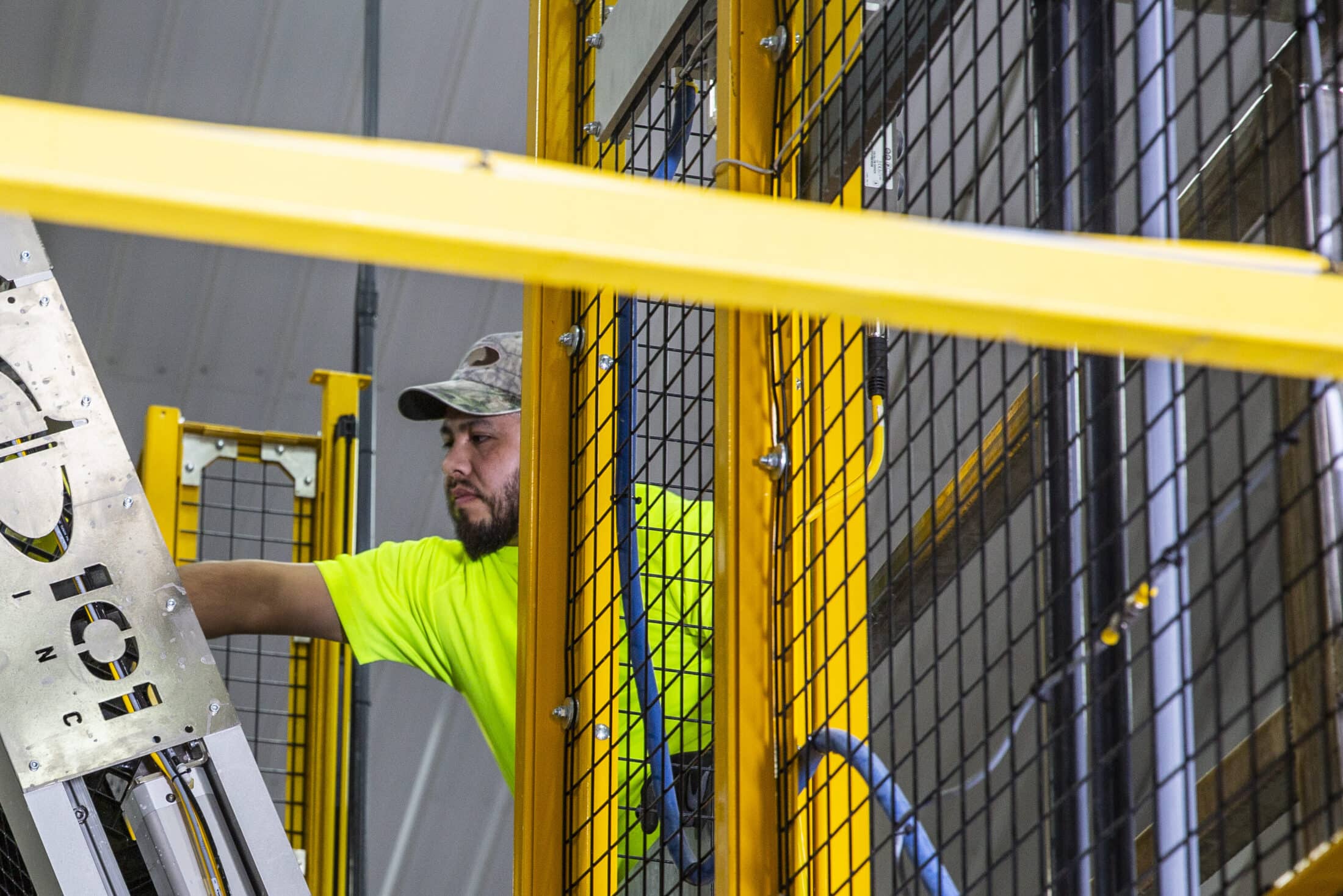
While Nutrition 101 will continue to work with their strong supplier/partner, they also are developing some skills in-house. “What we believe,” Cory said, “is that it’s important to have in-house capabilities for some things. If it needs to be done every day or two, then we need to be able to manage that. But if you get into something that doesn’t need to be touched for two or three weeks, that’s where you out-source.”
The workforce will rapidly embrace the benefits of automation.
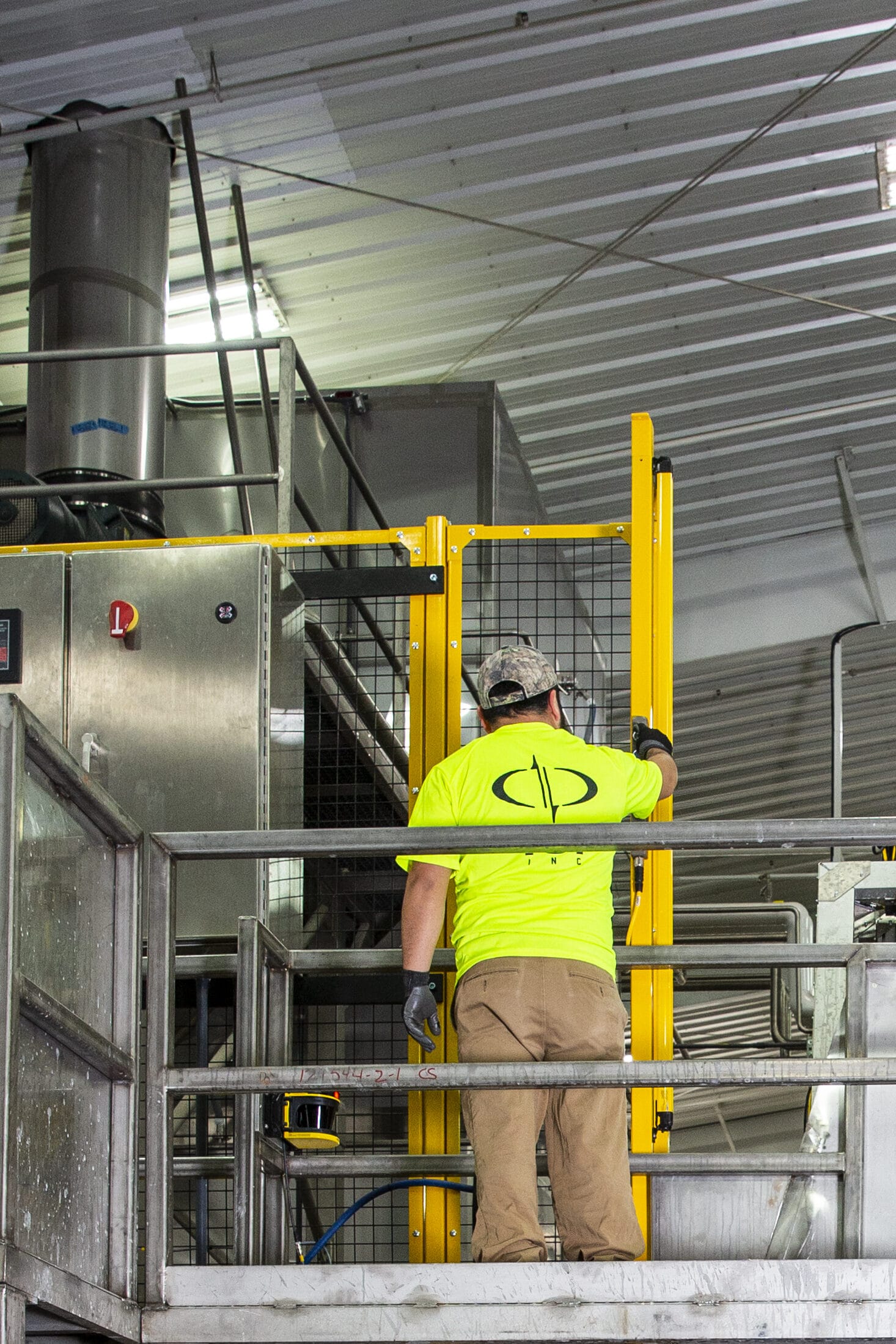
Excitement about the move into smart technology isn’t limited to leadership at Nutrition 101. “Our workforce is pretty excited,” Joe Haley said. “It is a big relief to them to not have to endure that heavy lifting on a day-to-day basis. They’re excited about the automation and having the ability to be there and interact with it.” He attributes much of that to the quality the company’s employees bring to their jobs. “They’re smart,” he said. “They’re young and lean on their feet, pretty agile. I think they’re excited to get to know the system and interact with it and use it to their benefit.”
Cory agreed. “I think from the employees’ perspective, they get to experience it. Remember the volume. The automation helps team morale a lot. It helps our efficiency; it helps us become more proactive in one of the most long-term ways to manage food waste and convert it into something usable. That’s something the employees like to be a part of.”
Additionally, the automation isn’t replacing employees. The process still requires human vision rather than machine inspection because the product may come in many different forms. “The Manufacturing Readiness Grant program certainly helped us bring this process right to the front,” Cory said. “It allowed us to say, ‘Okay, let’s do this. It makes sense. This is a good use of the dollars and the project.’ It’s right in line with what I think the program was looking for in terms of small business and automation. We appreciate the partnership and are very thankful.”
“It [the grant funding] allowed us to say, ‘Okay, let’s do this. It makes sense. This is a good use of the dollars and the project.’ It’s right in line with what I think the program was looking for in terms of small business and automation. We appreciate the partnership and are very thankful.”
Cory Peter
President at Nutrition 101
